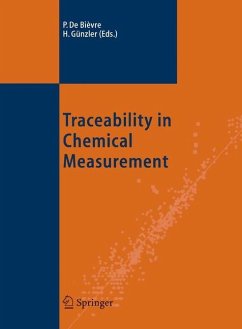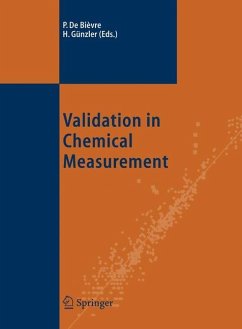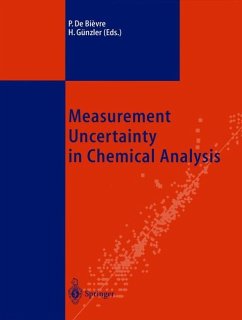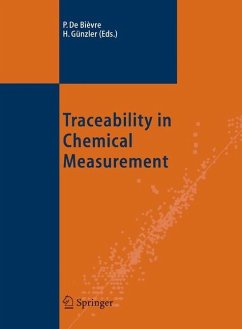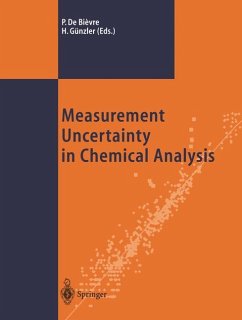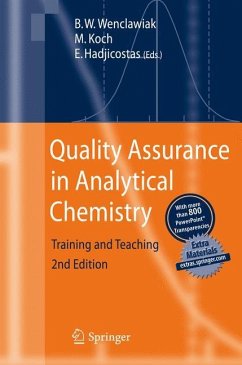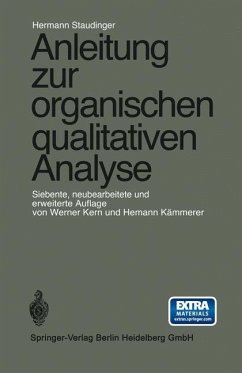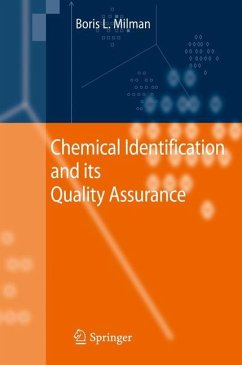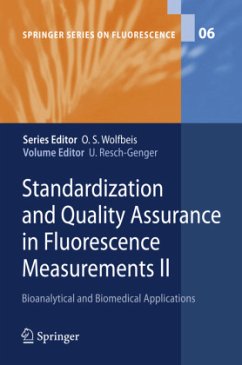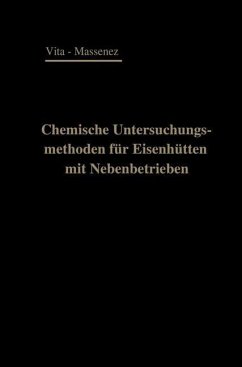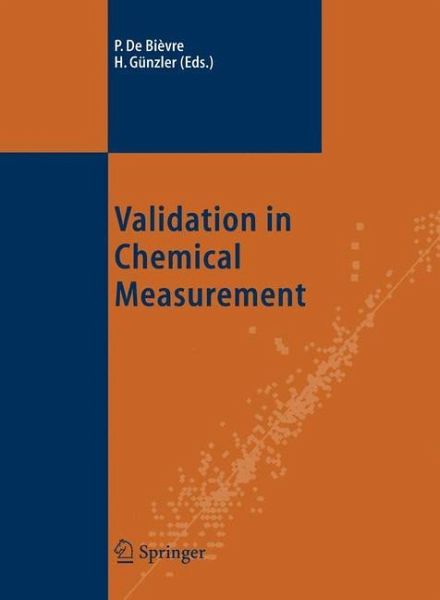
Validation in Chemical Measurement

PAYBACK Punkte
38 °P sammeln!
The validation of analytical methods is based on the characterisation of a measurement procedure (selectivity, sensitivity, repeatability, reproducibility). This volume collects 31 outstanding papers on the topic, mostly published in the period 2000-2003 in the journal "Accreditation and Quality Assurance". They provide the latest understanding, and possibly the rationale why it is important to integrate the concept of validation into the standard procedures of every analytical laboratory. In addition, this anthology considers the benefits to both: the analytical laboratory and the user of the measurement results.
Validationofmeasurementmethodshasbeenusedforavery ciated measurement uncertainty? The answer must be: no. longtimeinchemistry. Itismostlybasedontheexamination Therecanneverbeamechanismorrecipeforproducing - of a measurement procedure for its characteristics such as tomatically valid results because one can never eliminate precision, accuracy, selectivity, sensitivity, repeatability, re- theskills,theroleandtheresponsibilityoftheanalyst. producibility,detectionlimit,quanti?cationlimitandmore. ISO 9000:2000, item 3. 8. 5 de?nes validation as con?r- When focussing on quality comparability and reliability mation by examination and provision of objective evidence in chemical measurement, the ?elds of interest to this Jour- that the requirements for an intended use are ful?lled . The nal, one stumbles into various interpretations of the term revised edition of the VIM ( VIM3 ), is likely to ?ne-tune validation. It is one more example of a term which is used thisde?nitionoftheconcept validation tobe con?rmation sometimes very consistently, sometimes very loosely or in- through examination of a given item and provision of - deed ambiguously. Since the term is very common in the jective evidence that it ful?lls the requirements for a stated chemical community, it is important that its meaning be intendeduse . nd clear. Turning to the 2 edition of the International Vo- Lookingatsimplepractice, manypeoplearelookingfor cabulary of Basic and General terms in Metrology (VIM) aformaldecisionthatagivenmeasurementmethod automat- (1993), surprisingly we do not ?nd a de?nition. Webster s ically gives them valid i. e. reliable results. One wonders Dictionary of the English language (1992) tells us that val- what this has to do with stated intended use . Reliab- idation is making or being made valid . Obviously valida- ity clearly is a property of a measurement result.




